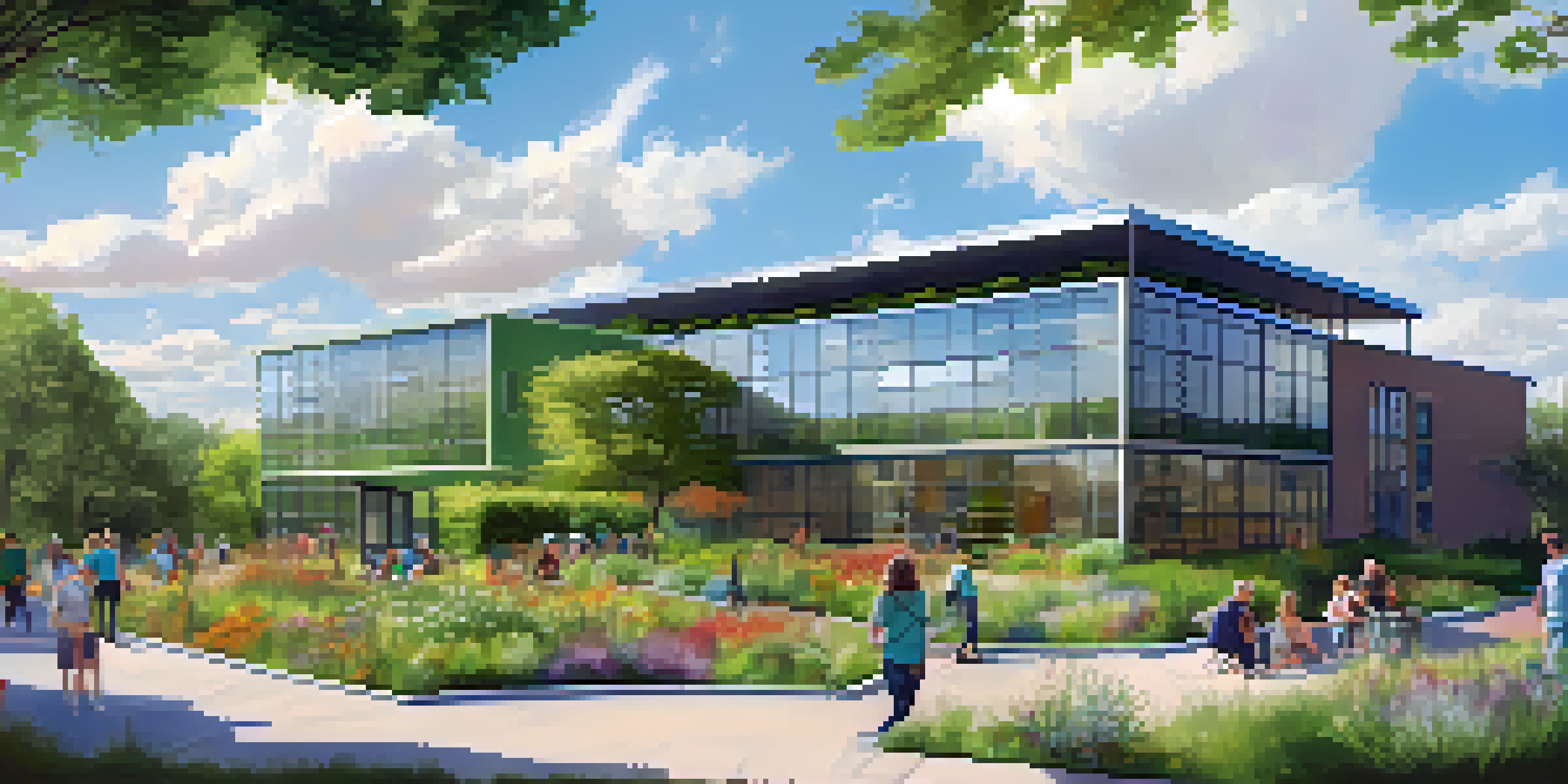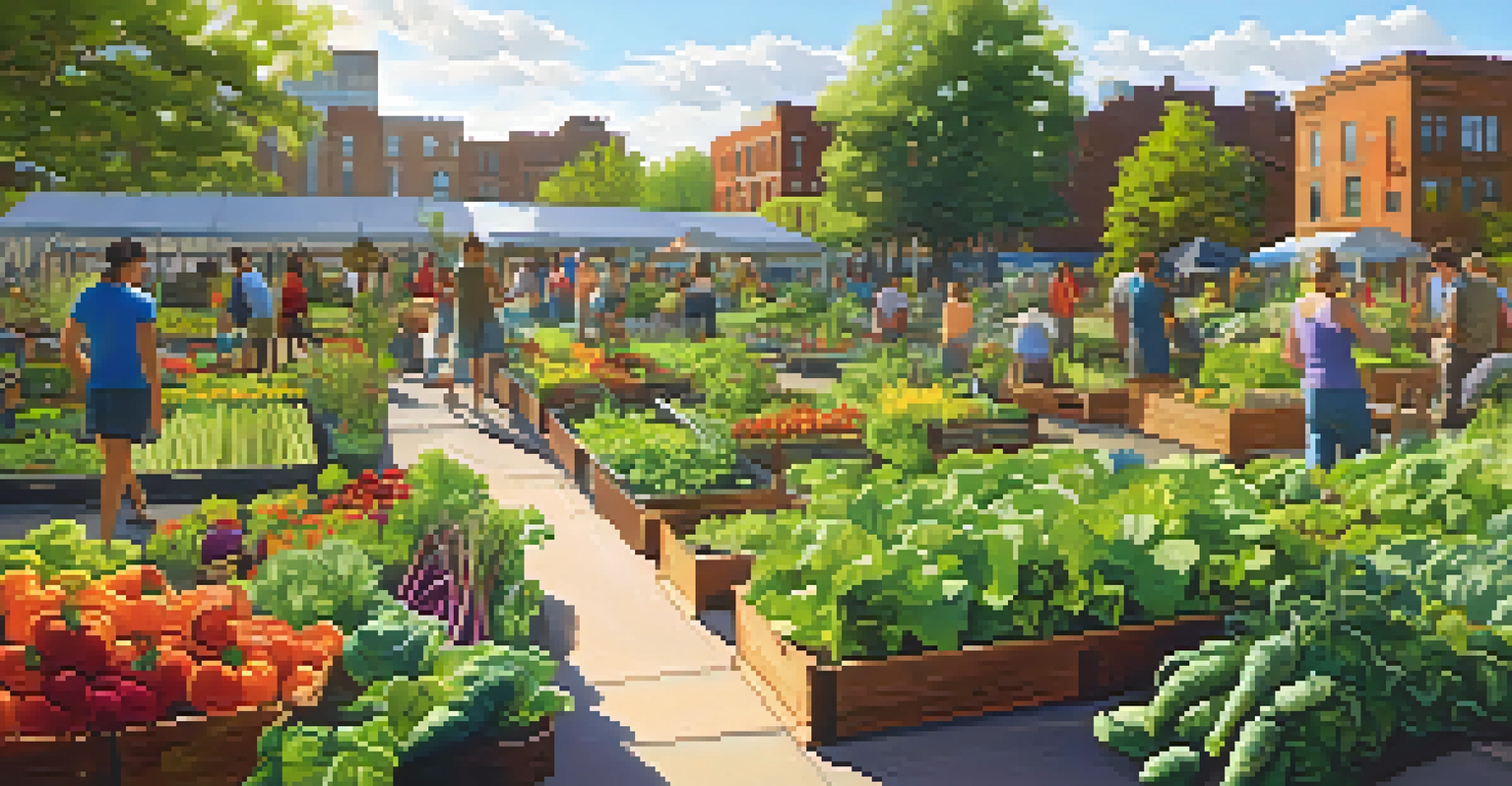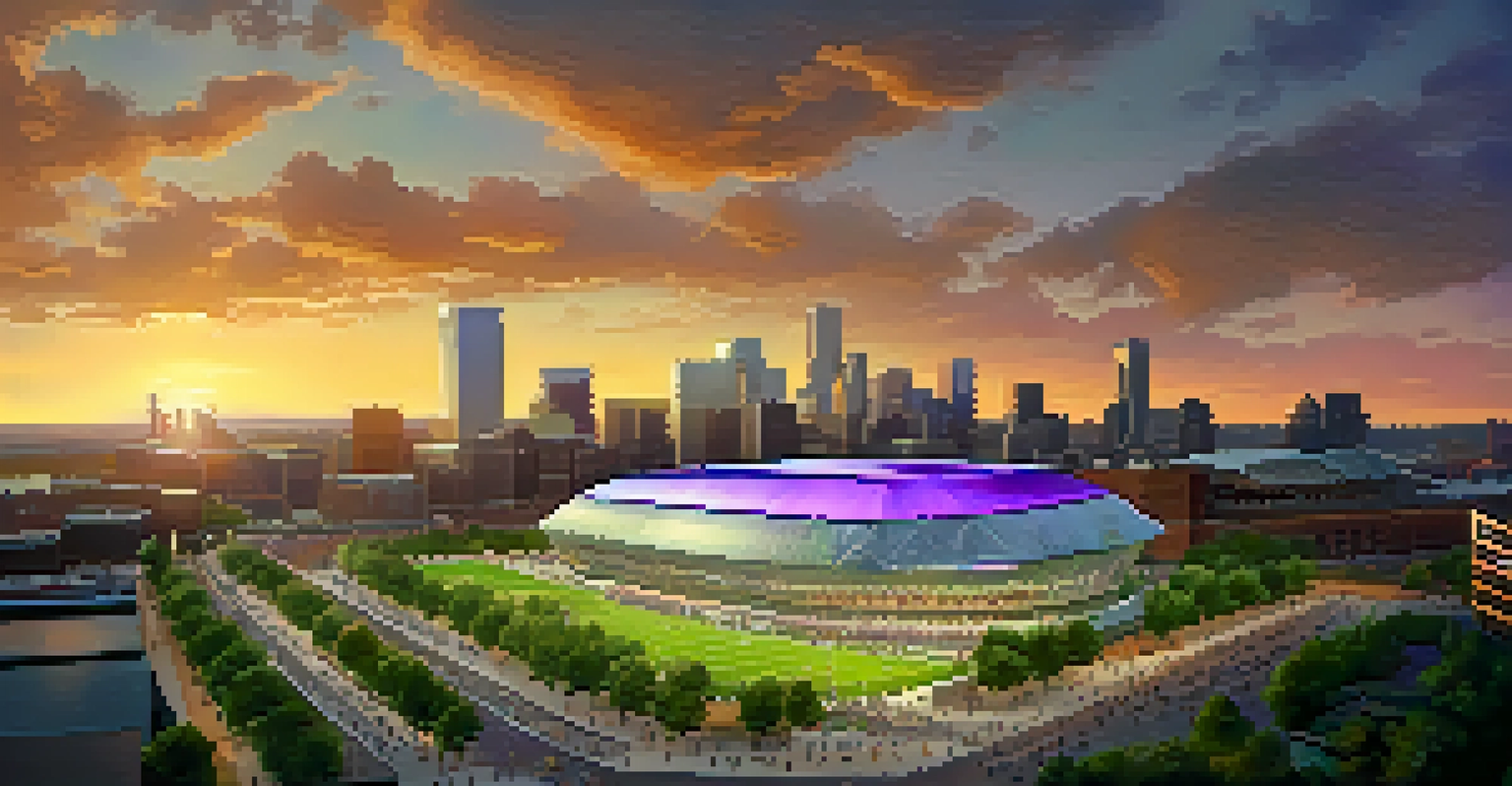Sustainable Architecture in Minneapolis: Eco-Friendly Designs

Understanding Sustainable Architecture in Minneapolis
Sustainable architecture is more than just a trend; it’s a necessity for our future. In Minneapolis, this approach aims to minimize environmental impact while maximizing energy efficiency. Architects and builders are increasingly focusing on designs that harmonize with nature, ensuring that structures not only serve their occupants but also contribute positively to the ecosystem.
Sustainable architecture is not just about building eco-friendly structures; it's about creating a better quality of life for everyone.
The essence of sustainable architecture is rooted in the principles of reducing waste, using renewable resources, and promoting a healthier living environment. In a city like Minneapolis, with its unique climate and rich natural resources, these principles become even more significant. By embracing sustainable practices, the city is paving the way for a greener, more resilient urban landscape.
Moreover, sustainable architecture fosters community engagement by encouraging local materials and labor. This creates a sense of ownership and pride among residents, further enhancing the social fabric of Minneapolis. As more projects emerge, the city becomes a living example of how innovative design can coexist with environmental responsibility.
Key Elements of Eco-Friendly Designs
Eco-friendly designs incorporate various elements that contribute to sustainability, such as energy-efficient systems, sustainable materials, and green spaces. For instance, using locally sourced timber reduces transportation emissions while supporting the local economy. Additionally, features like green roofs and permeable pavements help manage stormwater and promote biodiversity in urban settings.

Another crucial aspect is the integration of renewable energy sources, like solar panels and wind turbines. These technologies not only reduce reliance on fossil fuels but also lower utility costs for homeowners and businesses. By harnessing natural resources, Minneapolis is making strides toward a more energy-independent future.
Minneapolis Champions Sustainable Design
The city is prioritizing sustainable architecture to minimize environmental impact and enhance energy efficiency.
Lastly, smart building technology plays a pivotal role in optimizing energy consumption. Automated systems can adjust heating, lighting, and cooling based on occupancy and weather conditions, minimizing waste. This approach not only saves money but also enhances indoor comfort, proving that sustainability goes hand in hand with modern living.
Showcasing Notable Sustainable Projects in Minneapolis
Minneapolis boasts several innovative sustainable architecture projects that serve as benchmarks for eco-friendly design. One standout example is the Alliance Center, which features an impressive green roof and utilizes geothermal heating. This building not only exemplifies energy efficiency but also serves as a hub for organizations focused on sustainability.
The greatest threat to our planet is the belief that someone else will save it.
Another remarkable project is the Mill City Museum, which creatively incorporates its industrial past into a sustainable future. The museum uses reclaimed materials and prioritizes natural light, significantly reducing energy consumption. These projects highlight how historical preservation and modern sustainability can coexist beautifully.
The U.S. Bank Stadium is yet another example, featuring a unique design that maximizes natural light and includes a green roof. This stadium not only serves as a venue for major events but also embodies Minneapolis' commitment to sustainable practices. Each of these projects contributes to the city's reputation as a leader in sustainable architecture.
The Role of Local Government in Promoting Sustainability
The local government of Minneapolis plays a crucial role in fostering sustainable architecture through policies and incentives. Programs such as the Sustainable Building Policy encourage developers to incorporate eco-friendly practices into their designs. By offering tax incentives for green building projects, the city stimulates interest and investment in sustainable infrastructure.
Moreover, the city conducts regular workshops and community engagement events to educate residents about sustainable practices. These initiatives empower citizens to make informed decisions, whether they are renovating their homes or participating in larger community projects. This collaborative approach builds a strong foundation for a sustainable future.
Community Engagement Drives Success
Active community participation in planning fosters a sense of ownership and ensures designs meet local needs.
Additionally, the city has set ambitious goals for reducing greenhouse gas emissions and increasing the use of renewable energy sources. By aligning its strategies with global sustainability goals, Minneapolis demonstrates its commitment to being a leader in eco-friendly urban development. This proactive stance inspires other cities to follow suit.
Community Involvement: A Key to Success
Community involvement is essential for the success of sustainable architecture in Minneapolis. Residents actively participating in planning and decision-making processes can lead to designs that truly reflect their needs and values. When the community is engaged, it fosters a sense of ownership and responsibility towards local projects.
Neighborhood groups often collaborate with architects and planners to advocate for sustainable practices in their areas. This grassroots approach not only ensures that diverse perspectives are considered but also strengthens community bonds. For example, initiatives like community gardens and green spaces are directly influenced by local input, enhancing both sustainability and livability.
Additionally, educational programs in schools and community centers raise awareness about the importance of sustainability. By instilling eco-friendly values in the younger generation, Minneapolis is ensuring a continued commitment to sustainable practices. This cycle of involvement and education is crucial for creating a resilient urban environment.
Challenges Facing Sustainable Architecture in Minneapolis
Despite the advancements in sustainable architecture, Minneapolis faces several challenges in its pursuit of eco-friendly designs. One significant hurdle is the higher upfront costs associated with sustainable materials and technologies. While these investments often pay off in the long run through energy savings, many developers are hesitant to take the initial plunge.
Moreover, zoning regulations and building codes can sometimes hinder innovative designs. Inflexible policies may restrict the use of certain sustainable features, limiting architects' creativity. Navigating these regulations can be a complex process, requiring collaboration between city officials and builders to find common ground.
Challenges to Eco-Friendly Practices
Higher costs and regulatory hurdles pose significant challenges to the adoption of sustainable architecture in Minneapolis.
Lastly, public perception and awareness play a crucial role in the adoption of sustainable practices. Many residents may not fully understand the benefits of eco-friendly designs, leading to resistance towards new developments. Overcoming these misconceptions through education and outreach is vital for fostering a culture of sustainability in Minneapolis.
The Future of Sustainable Architecture in Minneapolis
The future of sustainable architecture in Minneapolis looks promising as more stakeholders recognize its importance. With ongoing advancements in technology and materials, architects can create even more innovative and efficient designs. This shift not only benefits the environment but also enhances the quality of life for residents.
As awareness grows, we can expect to see a surge in demand for eco-friendly buildings, prompting developers to prioritize sustainability in their projects. This trend will likely lead to a greater variety of green spaces, energy-efficient homes, and community-oriented designs. The city’s commitment to sustainability can inspire a ripple effect in neighboring communities, encouraging a broader regional approach.

Ultimately, the vision for Minneapolis is one of resilience and adaptability. By embracing sustainable architecture, the city is setting a standard for others to follow, ensuring a healthier environment for future generations. As we look ahead, it’s clear that sustainable design is not just an option; it’s a vital component of Minneapolis' urban evolution.